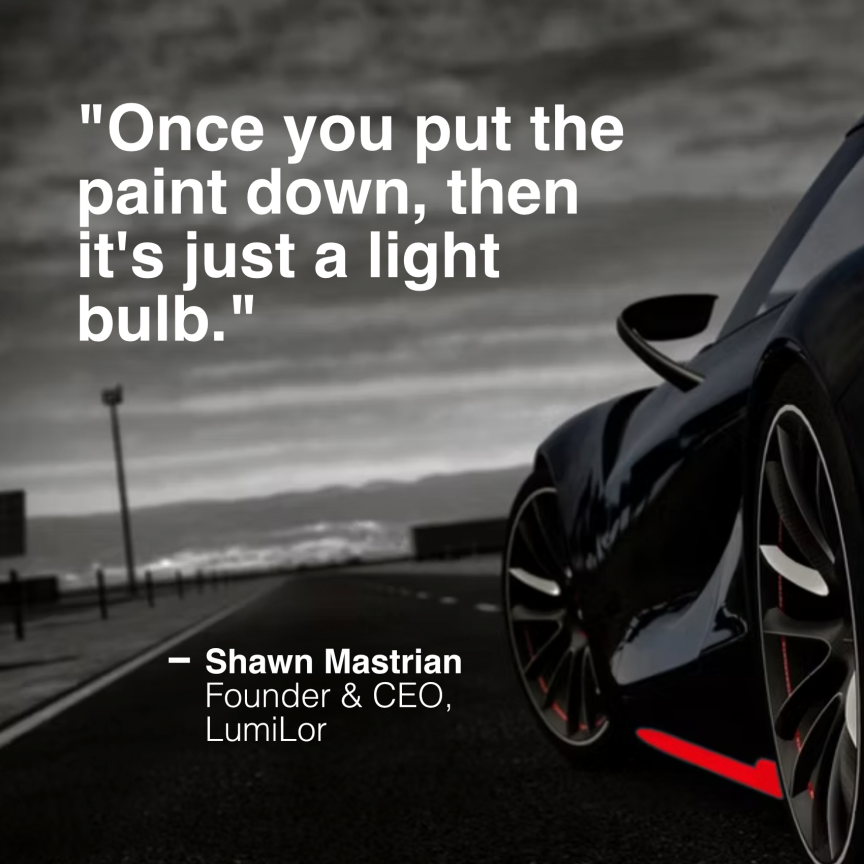As a follow up to an article in Electro Optics last year discussing the merits of laser lighting technology, Julian Carey, product marketing manager at SLD Laser (previously SoraaLaser), details some of the laser lighting products on display at the Light and Building trade fair, highlighting that the technology has achieved significant adoption and design-in since its introduction
For the first time at Light and Building, the largest trade show dedicated to lighting applications, lighting system makers showed fixtures and products implementing laser light technology in systems targeted for the built environment.
More than 220,000 visitors attended the biennial event, which took place from 18 to 23 March in Frankfurt, and 2,714 exhibitors showcased the latest technologies applied to lighting, electrical engineering and smart buildings. Applications present were comprehensive in range, from 300-lumen desk lamps to multi-thousand lumen pole mounted street and area lighting fixtures.
Laser light source architecture implements high optical power blue laser light that is focused to a small spot on a phosphor and converted to high luminance white light. This high-intensity output from the blue laser diodes allows the laser light to be focused to tiny spots on phosphors, generating a luminous output of 500 lumens from a few hundred microns in diameter. The resulting luminance is 10 to 100 times that of LEDs.
One new capability on display at Light and Building was laser-light-based fibre optic lighting (see image below). Fibre optic lighting systems are used in various architectural lighting applications where it is important to have the light source and its electronics remote from the output surface. This approach is used when service of the light output location may be inconvenient, costly or unsafe – such as in locations that are underwater or at great heights. Decorative architectural applications can use illuminated, light scattering fibre to create continuous light strips that highlight building elements. The high luminance of laser light enables the transport of light at high efficiency through very thin fibres as low as 1.5mm in diameter. Roblon and Excelitas both demonstrated fibre optic products, each using a single laser light module from SLD Laser.
Two implementations of fibre optic lighting by Roblon (left) and Excelitas, with a fibre bundle and 1.5mm single fibre respectively. Each uses a single LaserLight SMD; the light extends several metres
LEDs face challenges in spot lighting where the desired beam angles are less than eight degrees from small form-factor collimating optics. The ability of laser light to enable much narrower and sharper light beams was highlighted on the opening day of the show, with the presentation of a Design Plus award, given to SLD Laser for its LaserLight Microspot module.
The Design Plus awards are rewarded on the basis of design innovation as judged by a panel from the fair organisers and the German Design Council.
SLD’s LaserLight delivers 400 lumens at 6,000K CCT in a two-degree beam angle from a 35mm diameter compact optic and versatile spot light module.
At the heart of the module is the 7 x 7mm LaserLight SMD light source component, delivering over 1,000 Mcd/m2 of luminance from a 0.35mm spot size. Coupled with a TIR optic, the narrow beam is capable of illuminating at a throw distance of up to one kilometre.
One interesting application for the Microspot is assisting aircraft searches, for example on-board a helicopter flying over the night time landscape of Los Angeles, California. The handheld module can illuminate vehicles, people at the beach, and the letters of the Hollywood sign from distances of up to one kilometre. A video of this was played at the show.
At the Design Plus pavilion, combinations of the collimated light were shown with holographic diffusers that shaped the beam up to a 60:1 form factor, and with LensVector’s liquid crystal lens technology, which enabled the beam to change its size dynamically.
Targetti, an Italy based manufacturer of architectural lighting systems, demonstrated the Label 4, a track-mounted spot light implementing laser light technology (see image below).
Label 4 spot fixture by Targetti, with a LaserLight SMD light source
The fixture has a very narrow beam angle of less than 2.5 degrees with high uniformity and sharp cutoff. Targetti succeeded in lowering the colour temperature of the output light to 4,000K and a colour rendering index (Ra> 80), by developing multilayer dichroic filters in their laboratory with proprietary software and processes.
On display at SLD Laser was an automotive aftermarket lighting assembly made by Baja Designs, implementing four LaserLight SMDs in a cluster with secondary optics (as seen in image below). This powerful and narrow beam fixture highlights the capabilities of laser lighting in automotive applications analogous to those in architectural and portable lighting.
Automotive Aftermarket Light Fixture by Baja Designs implementing four LaserLight SMD light sources
Light and Building 2018 broke records for size and attendance with many innovative new products showcased. Laser lighting technology, as applied to speciality lighting applications like automotive, spot and fibre optic was exhibited by several lighting companies for the first time at this event. The awards and examples displayed show that laser light technology has garnered significant interest since its introduction and is being adopted for use in an increasing number of applications.


